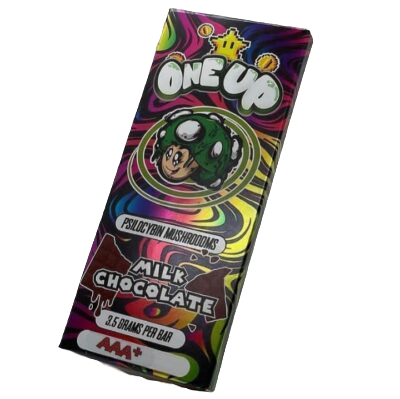Milk Chocolate – Smooth, Sweet, and Timeless
Few treats capture the heart quite like Milk Chocolate. With its creamy texture, rich sweetness, and melt-in-your-mouth consistency, it has become a global symbol of comfort and indulgence. Whether enjoyed as a simple bar, stirred into drinks, or baked into desserts, this cocoa creation offers satisfaction in every bite.
Made by blending cocoa solids with sugar and milk powder, Milk Chocolate strikes a delicate balance that appeals to nearly everyone. Unlike the intensity of dark chocolate or the richness of white chocolate, it sits comfortably in the middle — smooth, approachable, and versatile.
The History of Milk Chocolate
The origins of this beloved confection date back to 19th-century Switzerland. Daniel Peter, a chocolatier, is credited with creating the first solid Milk Chocolate bar in 1875 by mixing cocoa with condensed milk. This innovation changed the landscape of confectionery forever, spreading rapidly across Europe and then the world.
From the earliest bars to today’s wide variety of candies, truffles, and filled confections, the evolution of Milk Chocolate has been one of constant refinement and creativity.
Why People Love Milk Chocolate
The enduring popularity of this chocolate treat can be traced to four main qualities:
-
Creaminess – soft texture that melts effortlessly on the tongue.
-
Balanced sweetness – neither bitter like dark chocolate nor overly rich like white chocolate.
-
Versatility – perfect as both a snack and an ingredient in recipes.
-
Universal appeal – loved by children and adults around the globe.
This combination has cemented Milk Chocolate as the most widely consumed cocoa product in the world.
Nutritional Profile
While primarily enjoyed as a sweet indulgence, Milk Chocolate does carry some nutritional benefits thanks to its cocoa and milk content:
-
Cocoa solids contain flavonoids, known for their antioxidant properties.
-
Milk powder adds calcium and protein.
-
Sugars and fats provide energy, though best enjoyed in moderation.
When eaten mindfully, this classic chocolate bar can be part of a balanced diet.
How It’s Made
The process of producing Milk Chocolate is both art and science.
-
Cocoa beans are harvested, fermented, and roasted.
-
Grinding turns them into cocoa mass.
-
Mixing blends cocoa with milk powder and sugar.
-
Refining smooths the mixture.
-
Conching aerates and develops flavor.
-
Tempering and molding give it a glossy finish and solid shape.
Each step contributes to the silky consistency and flavor we associate with this cocoa confection.
Forms of Milk Chocolate
Its versatility has led to countless variations:
-
Chocolate bars – the classic, portable format.
-
Truffles and pralines – decadent filled candies.
-
Chocolate-coated fruits and nuts – balance sweetness with crunch.
-
Baking chocolate – essential for cakes, brownies, and cookies.
-
Hot cocoa – melted chocolate stirred into milk for a comforting drink.
This adaptability makes Milk Chocolate a star ingredient in global cuisine.
Perfect Pairings
This smooth cocoa delight pairs beautifully with a wide range of flavors:
-
Fruits like strawberries, bananas, and oranges.
-
Nuts including almonds, hazelnuts, and peanuts.
-
Caramel or toffee for buttery richness.
-
Coffee or tea to contrast sweetness with bitterness.
These combinations elevate the experience, turning a simple bite into a gourmet indulgence.
How It Compares to Other Types
-
Dark chocolate – bolder, less sweet, with higher cocoa content.
-
White chocolate – creamy but lacks cocoa solids.
-
Milk Chocolate – the balanced middle ground, combining cocoa flavor with sweetness and cream.
For those who want indulgence without bitterness, Milk Chocolate remains the top choice.
Cultural Significance
Beyond taste, this chocolate treat has become part of cultural traditions worldwide. From Valentine’s Day truffles to Easter eggs and holiday gift boxes, Milk Chocolate is tied to celebration, love, and comfort.
Global brands like Hershey’s, Cadbury, Nestlé, and Lindt have built empires on this confection, underscoring its importance in everyday life.
Conclusion
The Milk Chocolate is more than just candy — it’s a timeless indulgence that bridges nostalgia, comfort, and luxury. With its creamy consistency, balanced flavor, and versatility, it has delighted generations and continues to dominate the confectionery world.
Whether enjoyed as a bar, melted into a warm drink, or baked into desserts, this smooth cocoa treat always delivers joy. Creamy, classic, and irresistible, Milk Chocolate will forever be a favorite for sweet lovers everywhere.
Be the first to review “Milk Chocolate” Cancel reply
Related products
Pharma supply
Pharma supply
Pharma supply
Pharma supply
Pharma supply
Pharma supply
Pharma supply
Pharma supply

Reviews
There are no reviews yet.